If your lines are multiple points instead, you can use this version.

import numpy as np
import matplotlib.pyplot as plt
"""
Sukhbinder
5 April 2017
Based on:
"""
def _rect_inter_inner(x1,x2):
n1=x1.shape[0]-1
n2=x2.shape[0]-1
X1=np.c_[x1[:-1],x1[1:]]
X2=np.c_[x2[:-1],x2[1:]]
S1=np.tile(X1.min(axis=1),(n2,1)).T
S2=np.tile(X2.max(axis=1),(n1,1))
S3=np.tile(X1.max(axis=1),(n2,1)).T
S4=np.tile(X2.min(axis=1),(n1,1))
return S1,S2,S3,S4
def _rectangle_intersection_(x1,y1,x2,y2):
S1,S2,S3,S4=_rect_inter_inner(x1,x2)
S5,S6,S7,S8=_rect_inter_inner(y1,y2)
C1=np.less_equal(S1,S2)
C2=np.greater_equal(S3,S4)
C3=np.less_equal(S5,S6)
C4=np.greater_equal(S7,S8)
ii,jj=np.nonzero(C1 & C2 & C3 & C4)
return ii,jj
def intersection(x1,y1,x2,y2):
"""
INTERSECTIONS Intersections of curves.
Computes the (x,y) locations where two curves intersect. The curves
can be broken with NaNs or have vertical segments.
usage:
x,y=intersection(x1,y1,x2,y2)
Example:
a, b = 1, 2
phi = np.linspace(3, 10, 100)
x1 = a*phi - b*np.sin(phi)
y1 = a - b*np.cos(phi)
x2=phi
y2=np.sin(phi)+2
x,y=intersection(x1,y1,x2,y2)
plt.plot(x1,y1,c='r')
plt.plot(x2,y2,c='g')
plt.plot(x,y,'*k')
plt.show()
"""
ii,jj=_rectangle_intersection_(x1,y1,x2,y2)
n=len(ii)
dxy1=np.diff(np.c_[x1,y1],axis=0)
dxy2=np.diff(np.c_[x2,y2],axis=0)
T=np.zeros((4,n))
AA=np.zeros((4,4,n))
AA[0:2,2,:]=-1
AA[2:4,3,:]=-1
AA[0::2,0,:]=dxy1[ii,:].T
AA[1::2,1,:]=dxy2[jj,:].T
BB=np.zeros((4,n))
BB[0,:]=-x1[ii].ravel()
BB[1,:]=-x2[jj].ravel()
BB[2,:]=-y1[ii].ravel()
BB[3,:]=-y2[jj].ravel()
for i in range(n):
try:
T[:,i]=np.linalg.solve(AA[:,:,i],BB[:,i])
except:
T[:,i]=np.NaN
in_range= (T[0,:] >=0) & (T[1,:] >=0) & (T[0,:] <=1) & (T[1,:] <=1)
xy0=T[2:,in_range]
xy0=xy0.T
return xy0[:,0],xy0[:,1]
if __name__ == '__main__':
# a piece of a prolate cycloid, and am going to find
a, b = 1, 2
phi = np.linspace(3, 10, 100)
x1 = a*phi - b*np.sin(phi)
y1 = a - b*np.cos(phi)
x2=phi
y2=np.sin(phi)+2
x,y=intersection(x1,y1,x2,y2)
plt.plot(x1,y1,c='r')
plt.plot(x2,y2,c='g')
plt.plot(x,y,'*k')
plt.show()


